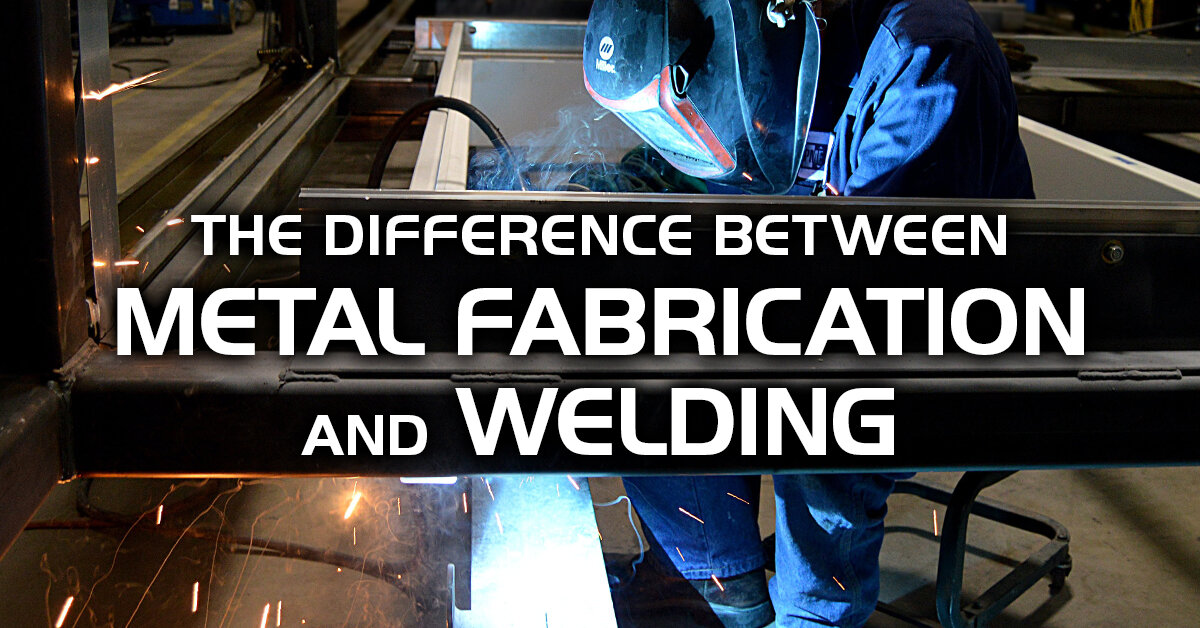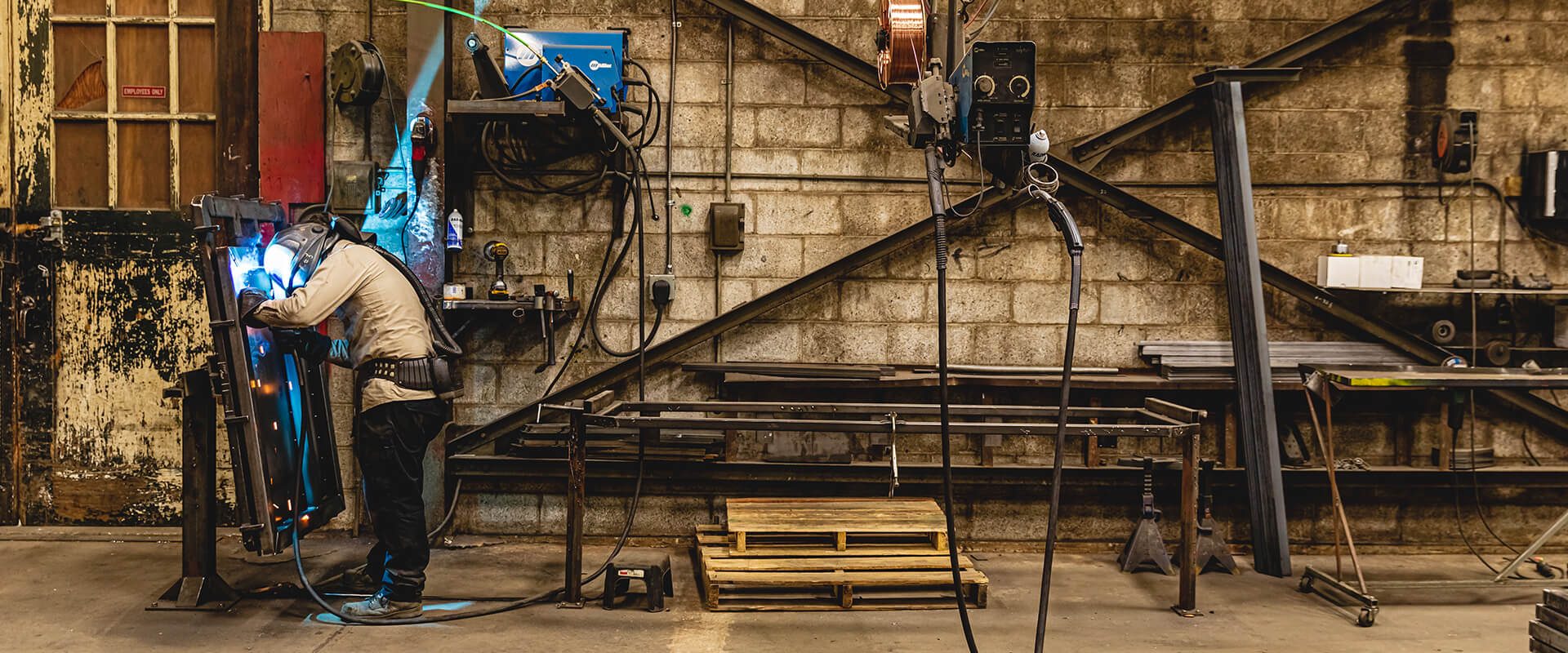Everything about Welding: Trick Insights Into Techniques and Best Practices for Success
Welding incorporates a variety of techniques, each matched for specific materials and applications. Recognizing these approaches, such as GMAW, SMAW, and TIG, is vital for accomplishing ideal results. The ideal equipment and safety and security practices can not be neglected. As prep work and repairing play critical duties in the welding procedure, understanding these aspects can considerably improve the high quality of the final item. What are the vital variables that assure a successful weld?
Recognizing Different Welding Strategies
Welding strategies include a variety of methods, each suited to particular applications and products. Among the most usual strategies are Gas Steel Arc Welding (GMAW), Shielded Steel Arc Welding (SMAW), and Tungsten Inert Gas Welding (TIG) GMAW, also known as MIG welding, is preferred for its rate and adaptability, making it excellent for thin materials. SMAW, or stick welding, is preferred for its simpleness and effectiveness in exterior atmospheres, specifically with thicker metals. TIG welding uses precision and control, making it suitable for intricate job and non-ferrous steels (Montana Mobile Welding and Repair Belgrade Welding). Each method has its unique advantages and considerations, permitting welders to select the ideal technique based on the project's needs, material kind, and wanted results. Comprehending these techniques is important for effective welding
Crucial Welding Tools and Tools
While various welding strategies call for particular abilities, the right equipment and devices are just as crucial for achieving high quality results. Crucial welding equipment includes welding makers, which differ depending upon the method-- such as MIG, TIG, or stick welding. Safety gear, consisting of gloves, safety helmets, and aprons, warranties security and comfort throughout the process. On top of that, fixtures and clamps aid safeguard materials in position, guaranteeing accuracy in welds. Consumables like welding poles, wire, and shielding gas are also crucial elements that affect the top quality of the weld. Additionally, devices such as cutters and grinders assist in surface area preparation and post-weld finishing, adding to a specialist end result. Spending in top quality equipment ultimately enhances the performance and efficiency of welding tasks.
Security Practices in Welding
Correct security practices are crucial in the welding sector to shield workers from prospective risks. Welders must put on appropriate personal safety equipment (PPE), including safety helmets with proper shading, handwear covers, and flame-resistant garments. Ample ventilation is essential to minimize exposure to unsafe fumes and gases created throughout the welding procedure. Furthermore, workers must be educated in the appropriate handling of welding devices to protect against mishaps. Fire precaution, such as keeping combustible materials far from the welding area and having fire extinguishers conveniently available, are required. Regular evaluations of devices and workspaces can assist recognize prospective threats before they result in crashes. By adhering to these security methods, welders can create a more secure working atmosphere and minimize risks connected with their profession.
Preparing Materials for Welding
Preparing materials for welding is an important action that substantially affects the quality and honesty of the final product (Montana Mobile Welding and Repair). Correct prep work involves cleansing the surface areas to eliminate pollutants such as corrosion, oil, and dirt, which can compromise the weld. Techniques such as grinding, fining sand, or utilizing solvents are typically used to accomplish a clean surface. Furthermore, making certain that the materials fit together comfortably is vital; voids can cause weak welds. It's additionally important to take into consideration the alignment and positioning of the components, as this will certainly impact the ease of welding and the final outcome. Picking the suitable filler product and ensuring compatibility with the base steels is vital for accomplishing strong, long lasting welds.
Tips for Getting High-Quality Welds
Attaining premium welds needs focus to detail and adherence to ideal practices throughout the welding process. Appropriate joint preparation is necessary, making sure surface areas are tidy and totally free from impurities. Selecting the appropriate filler material and welding method based on the base metals is critical for suitable bonding. Preserving consistent traveling speed and angle while welding can avoid defects and advertise uniformity. In addition, controlling warm input is necessary; extreme warmth can result in warping and weakened joints. If required, consistently inspecting the welds throughout the process permits for prompt adjustments. Finally, employing appropriate post-weld treatments, such as cleaning and stress alleviation, can improve the longevity and stability of the weld, ultimately guaranteeing a successful outcome.
Repairing Usual Welding Issues
Welding often provides obstacles that can impact the high quality and integrity of the end product. Usual issues such as porosity, inconsistent weld beads, and overheating can develop, each needing specific troubleshooting strategies. Understanding these problems is necessary for welders to improve their skills and attain ideal outcomes.
Porosity Issues Discussed
Porosity can commonly be forgotten, it stays an important concern in welding that can endanger the honesty of a completed item. Porosity refers to the existence of tiny gas pockets within the weld bead, which can deteriorate the joint and lead to early failing. This problem generally develops from contaminants, wetness, or incorrect shielding gas protection throughout the welding process. To minimize porosity, welders should verify that the base materials are completely dry and tidy, make use of proper securing gases, and keep consistent welding parameters. Regularly evaluating the equipment and setting can also assist recognize potential issues prior to they manifest in the weld. Attending to porosity efficiently is necessary for accomplishing strong, durable welds that satisfy top quality criteria.

Irregular Weld Beads
Irregular weld grains can significantly influence the quality and stamina of a completed product. Numerous variables add to this issue, consisting of improper travel rate, inaccurate amperage settings, and irregular electrode angles. When the welder moves also quickly, a grain may appear slim and lack infiltration, while moving also slowly can cause extreme build-up. Furthermore, making use of the incorrect amperage can cause either undercutting or extreme spatter, both of which compromise weld integrity. The welder's strategy, such as inconsistent torch movement, can likewise result in irregular bead appearance. To reduce these issues, welders need to focus on maintaining stable, controlled motions and making certain correct tools setups to achieve uniformity in their welds. Uniformity is key to accomplishing solid and trusted welds.
Overheating and Warping Issues
Excessive warmth throughout the welding procedure can bring about substantial getting too hot and deforming concerns, affecting redirected here the architectural honesty of the workpiece. These troubles often show up as distortion, which can compromise positioning and fit-up, making more setting up testing. Variables adding to overheating consist of the option of welding parameters, such as voltage and travel speed, along with the kind of material being welded. To alleviate these problems, welders need to preserve consistent travel rate and appropriate heat input while look at this now keeping an eye on the workpiece temperature level. Additionally, pre-heating or post-weld warm treatment can help minimize tensions caused by quick air conditioning - Belgrade Fabrication. Routine inspection and adherence to best techniques are necessary in protecting against getting too hot and making certain the longevity and reliability of bonded frameworks
Often Asked Questions
What Are the Profession Opportunities in the Welding Sector?
The welding sector provides diverse career opportunities, including placements as welders, instructors, designers, and examiners. Specialists can operate in production, building and construction, aerospace, and automotive fields, gaining from strong demand and competitive wages in different duties.
How Can I Enhance My Welding Speed Without Giving Up Quality?
To enhance welding speed without compromising high quality, one should exercise reliable strategies, preserve tools, optimize setups, and improve hand-eye coordination. Regular training and looking for feedback can also considerably add to achieving faster, top notch welds.
What Certifications Are Offered for Welders?
Various certifications exist for welders, consisting of those from the American Welding Culture (AWS), the National Center for Building Education And Learning and Research (NCCER), and various industry-specific companies. These qualifications enhance employability and show ability efficiency.
Exactly How Does Welding Affect the Features of Metals?
Welding affects the residential or commercial properties of steels by changing their microstructure, which can lead to modifications in ductility, hardness, and stamina. Warm input and air conditioning rates during the process considerably influence these product features.
Can I Weld Dissimilar Metals Together?

Comments on “Most common welding issues you can fix fast by Montana Mobile Welding and Repair Belgrade Fabrication”